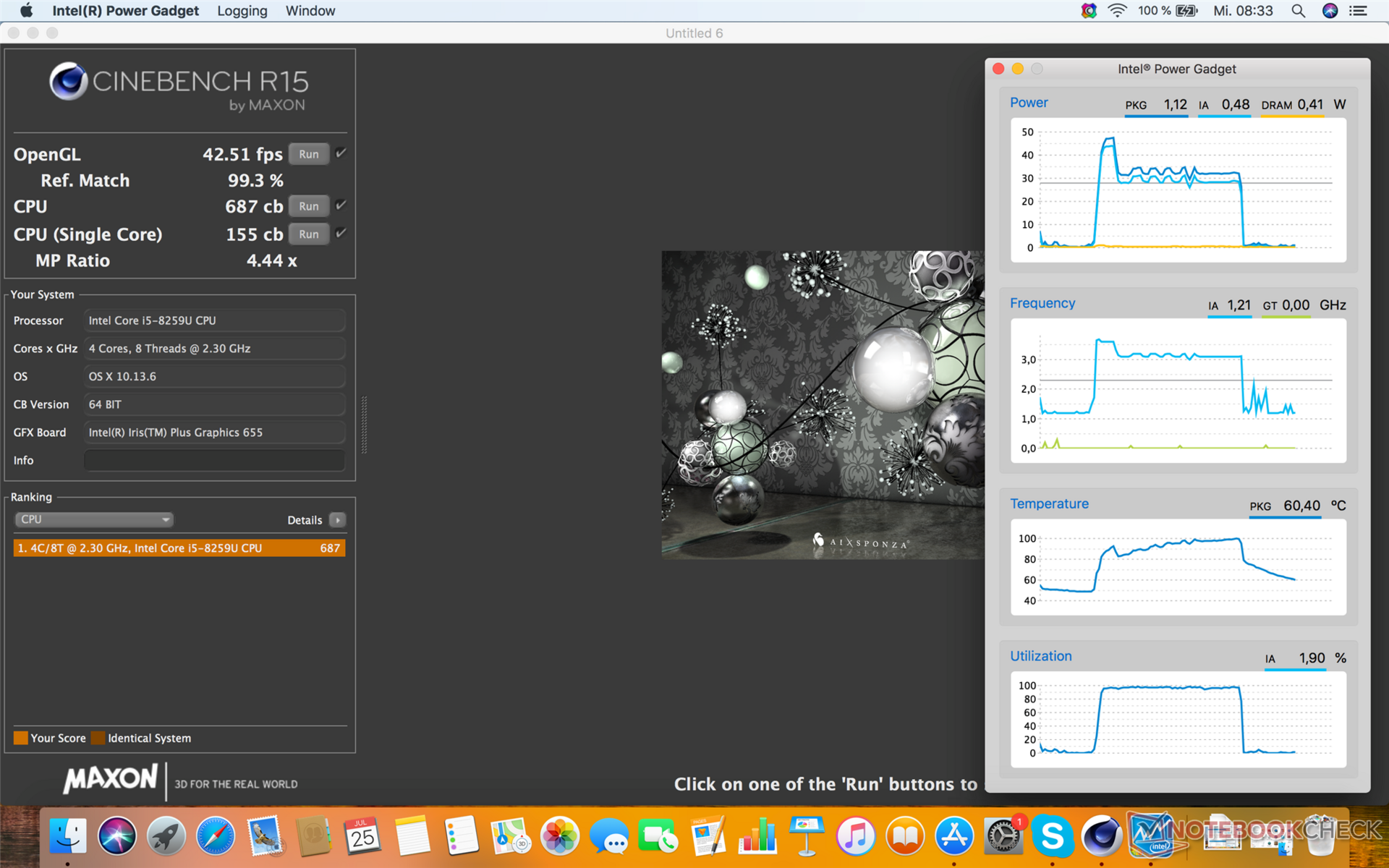

Things get more interesting if the software in question will take advantage of Nvidia's CUDA and RT cores. It's a crying shame that Microsoft didn't find a way to include a 12th generation Core i7 chip, as that would offer explosive power by comparison. It's only if you want to use the Studio 2+ in tasks that exploit multiple cores that it will look tardy, with multicore results of 5,419 in Geekbench 5 and 6,153 in Cinebench R23 the equivalent of a warm cuddle rather than setting anything on fire. We found all apps snapped dutifully to attention, and a return of 5,317 in PCMark 10 reflects this. This isn't to suggest that the Surface Studio 2+ is slow. All of which means that the Studio 2+ is around 10% to 25% faster than its predecessor, depending on the task. Or consider Cinebench R15, with 734cb upping to 951cb. Likewise in Geekbench 4 (Geekbench 5 hadn't been released back in 2018), where single-core results improve from 4,777 to 5,259, with a similarly unimpressive increase from 16,026 to 19,385 in the multicore section. While they both have four cores and eight threads, four years' worth of architectural improvements pushed the ITPro benchmark score from 135 to 175. These combine to provide a substantial boost over the Surface Studio 2, but then its components were pension age: the Studio 2's Core i7-7820HQ could boost to 3.9GHz, while the Core i7-11370H can hit 4.8GHz. Microsoft Surface Studio 2+ review: Performance There's plenty of bass, audio is well balanced with none of the dominant treble that plagues most laptop speakers, and I never switched back to my Echo throughout my time with the Studio 2+. And films sound spectacular thanks to the best pair of speakers you will find in an all-in-one PC. There's much better news for people who seek the riches of DCI-P3 – as beloved by Hollywood – as Vivid mode ensures 94% coverage of that space. So almost one fifth of available print colours are left untouched. Print designers can't rely on the display, however switching to the Vivid mode gives better coverage of the Adobe RGB space, but even then it's only 82%. Both are superb results that mean you can trust it for accuracy. The sRGB mode locks it down to that space, with an average Delta E of 0.62 and peak of 1.28. That's 1K off the 6500K target, which is the closest to perfection we've seen. It's super bright and super white, hitting 498cd/m2 in our tests with a measured 6499K in sRGB mode. The 4,500 x 3,000 resolution translates into 193ppi sharp for any screen, and especially one that will be viewed at a distance. Microsoft hasn't made a single change to the 28in display, but it hasn't aged a bit. (Image credit: Future) Microsoft Surface Studio 2+ review: Display


 0 kommentar(er)
0 kommentar(er)
